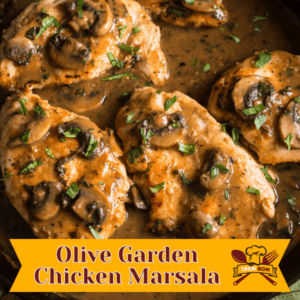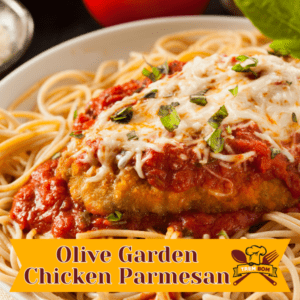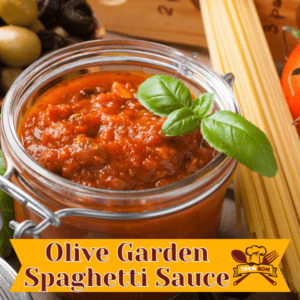
Texture is one of the most important factors in food quality, influencing the physical properties and sensory experience of what we eat. Understanding the role of texture in cuisine can greatly enhance the overall taste experience while leading to a greater appreciation of the food we consume.
Whether it be crispy and crunchy or slimy and soft, texture refers to the way a food feels in the mouth. The rheology of a food product greatly impacts its texture and can have a significant effect on freshness, shelf-life, and overall quality.
Key Takeaways:
- Texture is a critical component of food quality and influences the sensory experience of what we eat.
- Crunchy and creamy textures are just a few examples of the different textures found in cuisine.
- Physical properties, such as rheology, are closely linked to texture differences and overall food quality.
- Texture preferences vary greatly across cultures and individuals.
- The food industry has led to the development of various texture-modified products to cater to specific consumer preferences and improve product acceptability.
How Texture Plays a Significant Role in Food and Drink
When we think of our favorite foods, we often focus on the flavors and aromas that make our mouths water. While taste is undoubtedly important, texture can make or break a dish. Texture plays a significant role in the food and drink industry, influencing everything from sensory processing to consumer preferences.
Sensory input from texture can greatly impact our overall eating experience. Research shows that texture preferences can be just as important as taste preferences, with some individuals preferring crispy and crunchy textures, while others prefer slimy or soft foods.
The food industry recognizes the importance of texture and works hard to ensure that food products meet consumer expectations. This has led to the development of texture-modified foods and the use of instrumental methods to measure and quantify texture differences in food products.
Overall, texture is important in creating a satisfying and enjoyable dining experience. From the crispiness of a potato chip to the smooth texture of ice cream, texture can greatly enhance the way a food feels in the mouth and ultimately contribute to the overall taste experience.
Exploring Different Textures: From Crunch to Chewy
When it comes to food, texture is just as important as taste. Different textures can greatly impact the overall eating experience, influencing our preferences and perceptions. From crunchy and crispy to chewy and slimy, the textural properties of a food can make a big difference in how it’s enjoyed.
When we bite into something crunchy, like a potato chip, the sensation is both auditory and physical. We hear the crunch and feel it as the chip breaks apart in our mouths. On the other hand, chewy foods like caramel require more effort to break down, requiring more chewing and providing a longer-lasting mouthfeel.
Texture-modified foods are becoming more prevalent, especially in healthcare settings where certain patients may require specific textural preparations to be able to consume them. For example, those with dysphagia may require pureed or lumpy foods that are easier to swallow.
The Sensory Experience of Different Textures
The textural properties of food can be described using a variety of terms, from crunchy and crispy to chewy and slimy. Each texture refers to a specific sensation in the mouth, which impacts the overall taste experience.
Crispy and crunchy foods, such as chips and crackers, provide a satisfying crunch that can be both auditory and physical. Soft foods, like pudding, provide a smooth and creamy mouthfeel. Chewy foods, like gummy bears and beef jerky, require more effort to break down, providing a longer-lasting sensation.
Some textures, like slimy or soggy, may be less desirable to some individuals. However, others may find them enjoyable, highlighting the individual nature of texture preferences.
Texture Modification and the Food Industry
Texture modification is a common technique used in the food industry to enhance product acceptability and cater to specific consumer preferences. For example, the production of crispy snacks like potato chips requires specific textural preparations, including the use of ingredients and manufacturing processes that increase the crunchiness.
The texture of a food product can also impact its shelf-life. For example, soft foods may spoil more quickly than crispy foods due to increased moisture content. By modifying the texture of a food product, manufacturers can extend its shelf-life and improve its overall quality.
Overall, understanding and manipulating texture is an important aspect of food production and consumption. The different textures of food can greatly impact the eating experience, influencing our preferences and enjoyment.
The Science of Texture: Understanding the Physical Properties
When it comes to food, the texture refers to the physical properties of the food that affect the way it feels in the mouth. Texture differences can greatly impact the overall taste experience, and getting the texture wrong can ruin an otherwise excellent food product.
The properties of a food that contribute to texture include hardness, chewiness, viscosity, cohesiveness, adhesiveness, and elasticity. These properties can be measured using instrumental methods such as texture analyzers and rheometers.
Texture modification can be applied for a specific application, such as improving the shelf-life of a product or creating a desired mouthfeel. For example, modifying the texture of a pureed food can help individuals with dysphagia (difficulty swallowing) to consume it more easily.
Overall, understanding the physical properties of food and how they contribute to texture is crucial for food manufacturers and chefs alike. By quantifying and manipulating these properties, they can create various textures, from crispy and crunchy to lumpy and slimy, to enhance the sensory experience of their products.
The Impact of Texture on Taste: From Appearance to Mouthfeel
When it comes to enjoying food, taste is only one component of the experience. The appearance of the food and its texture can also have a significant impact on the way a food is perceived by the palate. In fact, the texture of food can play a more important role in overall enjoyment than many people realize.
The way a food feels in the mouth, or its mouthfeel, can greatly influence the kind of taste experience a person has. Smooth texture refers to foods that are soft and velvety, while crunchy textures are those that have a crispy or firm consistency. Texture differences can greatly impact the overall taste of the food, with certain textures enhancing the flavors and others detracting from them.
For example, consider the experience of eating a juicy, ripe peach. The fruit’s soft, smooth texture complements the sweet, tangy flavor, creating a harmonious taste experience. On the other hand, imagine biting into a piece of slimy seaweed. The slimy texture can detract from the taste and make it less enjoyable.
Research has shown that the texture of food can also influence how much a person eats. Foods that are soft and easy to chew, such as mashed potatoes, can make people eat more quickly, while chewy foods, such as steak, require more time and effort to eat and can result in people eating less.
In addition to the physical properties of the food, individual preferences and cultural backgrounds can also influence the way texture is perceived. For example, people from certain cultures may prefer slimy or lumpy textures, while others may prioritize crispiness. Understanding the role of texture in food and how it impacts taste can help chefs and food manufacturers create more appealing and satisfying dishes.
Texture Preferences: Why Some Like It Crunchy, Some Like It Smooth
Texture preferences are highly individualized and can greatly impact the sensory experience of food intake. Different textures can evoke different emotions, memories and reactions, which ultimately impact overall taste experience. Specific application of various textures are found in both slimy and crunchy textures or even crispiness of foodstuffs, and in every type of cuisine around the world.
The taste of food is closely linked with the texture of the food. Texture refers to how a food feels in the mouth, including factors such as chewiness, smoothness, and the overall mouthfeel of a food product. In fact, a food’s texture plays such a crucial role in the overall taste experience that it can make or break the quality of a food product.
Individual texture preferences are shaped by a range of factors, including past food experiences, cultural background, and even genetic makeup. Some people may prefer slimy or soft foods, while others may opt for crispy and crunchy textures. Specific application of textures can even vary depending on the time of day or mood of the individual.
The Role of Texture in the Food Industry: From Manufacturing to Acceptability
The texture of a food product is a critical attribute that can influence its overall acceptability and appeal to consumers. Food manufacturers understand the importance of texture in product development, using it to create desirable sensory experiences that enhance the eating experience. In fact, texture preferences have led to the development of texture-modified food products that cater to specific application and taste.
Texture preferences vary across cultures and individuals, making it essential for manufacturers to consider texture in the development of new products. Products that fail to meet texture preferences may be perceived as less desirable, leading to negative impacts on shelf-life and overall food quality.
There are numerous ways that food manufacturers can use texture to enhance product acceptability, such as incorporating crunchy or chewy components, adjusting viscosity, or modifying rheology. The ability to quantify texture differences through instrumental methods allows manufacturers to tailor products to meet specific texture preferences.
Ultimately, the role of texture in the food industry cannot be understated. As consumers become increasingly discerning of textures and mouthfeel, manufacturers must prioritize texture in product development to remain competitive and satisfy consumer demands.
Enhancing the Textural Experience: Chefs and Texture in Cuisine
When it comes to creating an unforgettable culinary experience, chefs know that taste is only one piece of the puzzle. One of the key factors that can elevate a dish from good to great is texture. From the sensation of chewing and swallowing to the way a food feels in the mouth, texture plays a crucial role in the overall enjoyment of a meal.
Sensory processing is a complex subject, but chefs who learn to understand it can use it to their advantage. They can create dishes that appeal to specific textural preferences, such as the love of chewiness in certain cuisines. Furthermore, chefs can also use texture to influence the perception of flavor. For example, by pureeing certain ingredients, chefs can create a smooth texture that allows for greater flavor absorption and enhances the overall taste experience.
Soft foods like mashed potatoes or pureed soups can be elevated by incorporating textural contrasts, such as a crispy garnish or a lumpy ingredient. These contrasts add dimension to the dish and keep the palate engaged, enhancing the overall flavor experience. The incorporation of slimy foods, such as seaweed, can also add a unique and enjoyable texture to dishes.
It’s essential for chefs to pay attention to textural preferences when developing cuisine. By catering to specific preferences, chefs can ensure greater customer satisfaction. Additionally, they can use texture to add novelty and surprise to dishes, providing an unforgettable dining experience that keeps people coming back for more.
Texture Modification: From Soggy to Crispy
Texture modification is an essential part of food production, ensuring that products meet specific quality standards. One common issue that arises is preventing food from becoming too soggy, which can greatly affect the overall eating experience.
In response to this, food manufacturers have developed various texture-modified products that aim to prevent sogginess and enhance crispiness. This has led to the development of products such as crispy coatings for fried foods, which can be quantified in terms of crunchiness.
| Texture Modification Techniques | Specific Application |
|---|---|
| Texturizers | Used to modify the texture of a food product, such as making it more crispy or crunchy. |
| Thickening agents | Used to adjust the consistency of a food product, such as making it thicker or creamier. |
| Coating agents | Used to prevent moisture from penetrating a food product, such as preventing bread from becoming soggy in a sandwich. |
Texture-modified foods can greatly enhance the sensory experience of eating by providing a desired mouthfeel that feels satisfying in the mouth. For instance, crispy and crunchy textures can add excitement and interest to a dish, while soft foods such as puddings can provide comfort and coziness.
Overall, texture modification is an important aspect of food production, ensuring products meet high standards of quality and enhancing the overall eating experience. By using various texture modification techniques, food manufacturers can produce foods that feel good in the mouth and meet the specific demands of consumers.
Conclusion
In conclusion, texture plays a crucial role in the food and drink industry. It can make or break the overall taste experience and greatly influence consumer preferences. Texture refers to the physical properties of a food that affect the way it feels in the mouth. Different textures, from slimy to crunchy, can lead to varying sensory experiences and impact the way we perceive taste.
Food manufacturers use texture to enhance product acceptability and improve shelf-life. Chefs utilize various textures to create a harmonious sensory experience and elevate the overall enjoyment of a dish. Texture modification techniques are used to achieve desired levels of crispiness and prevent food from becoming soggy.
Overall, understanding texture preferences and how they impact the overall taste experience is crucial in the food industry. Texture is important and plays a significant role in the sensory processing and sensory input of food. By considering texture in food preparation and product development, we can enhance the overall quality of our food and drink offerings.
FAQ
What is the role of texture in food?
Texture plays a significant role in food by enhancing the overall taste experience and sensory enjoyment. It can make a dish more appealing and influence texture preferences.
Why is texture important in the food and drink industry?
Texture is important in the food and drink industry because it can greatly impact the consumer’s sensory processing and influence their preferences. It can make or break the overall eating experience.
What are some examples of different textures in food?
Some examples of different textures in food include crunchy, chewy, crispy, lumpy, and slimy. Each texture provides a unique mouthfeel and sensory experience.
What are the physical properties that contribute to texture?
The physical properties of a food, such as its rheology, contribute to its texture. These properties can be measured and analyzed using instrumental methods.
How does texture impact taste?
Texture can greatly influence the perception of taste. It affects the way a food feels in the mouth and can enhance or diminish the overall flavor experience.
Why do people have different texture preferences?
Texture preferences can vary across individuals and cultures. Factors such as sensory experience, specific applications, and personal taste preferences contribute to why some people prefer crunchy textures while others prefer smooth or slimy textures.
How does texture play a role in the food industry?
Texture plays a crucial role in the food industry as it affects product acceptability and shelf-life. Food manufacturers use texture to cater to specific consumer preferences and enhance the overall quality of their products.
How do chefs use texture in cuisine?
Chefs utilize various textures in cuisine to create a harmonious sensory experience. They may incorporate soft foods for easy chewing and swallowing or focus on creating chewiness for enhanced flavor and textural preferences.
What is texture modification in food production?
Texture modification involves techniques used to alter the texture of food products. This can range from preventing foods from becoming soggy to achieving desired levels of crispiness. It is important for creating the desired mouthfeel and overall product experience.
Why is texture in food important?
Texture in food is important because it contributes to the overall enjoyment and perception of the dish. It can make a significant difference in the sensory experience and enhance the overall taste.






